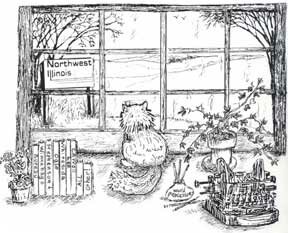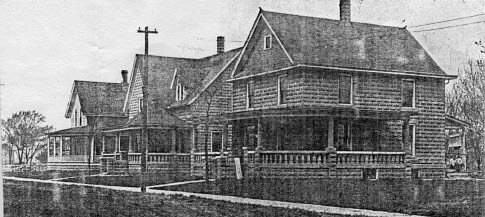
Discover rewarding casino experiences. 
|
All the towns must have had many similar concrete projects. Skyscrapers were going up in the twenties and thirties to set records. Impressive bridges spanned bays and wide rivers spanned. Cement was responsible. Even that self-admiring, Frank Lloyd Wright, architect, used the humble concrete block to build a home. “LaMiniatura,” was constructed on the side of a deep ravine in the Hollywood hills in 1923. Of a plain, modern design, it had a “mansard-like” overhanging roof line. The only decoration were blocks cast with a Mayan motif, popular at the time. They wee a running course all around the upper story. Entry was at the rear at ground level. Wright devised a method of webbing he blocks together with steel rods, both horizontally and vertically to join the blocks then filling the voids with concrete. Mary Mix Foley describes and illustrates it in her book concerning the American house since the beginning of our history. Wright wasn’t the only designer to use the cement block. During the first three-to-four decades of the twentieth century “pattern books” were a very popular magazine featuring exterior views and interior plans of houses that could be built throughout in a wide variety of styles. Widely promoted and accepted in them was the “simulated” stone of concrete, a novel new method that was solid, permanent and had a lack of maintenance for its benefits. As a savvy businessman, Thomas A. Galt, Sterling, had sorted out the pros and cons of the concrete block to then deeply invest in that industry just as he had in several other types of manufacturing and merchandise over the years in the Twin Cities. Galt had arrived in Sterling in 1855 having been born in Pennsylvania and whose father had died when Galt was fourteen. He went to the local country school but then struck out to clerk and storekeep, to work as a salesman in various locales. On arriving at Sterling he bought a partnership in a hardware store with David Crawford whose interest he soon purchased. Biography written of him said he was of strong character, had a clear idea of what was necessary. He was an “inventor of extraordinary ability.” Thus he produced a corn shredder, corn husker; those said to be among the first of their kind. There was a side delivery hay rake and several other agricultural implements that were manufactured in the several factories initiated by him. He believed that the waterfront of the Rock River was a great asset to the communities of Rock Falls and Sterling with the river itself a source of water power. He was one of the founders of the Sterling Hydraulic Co. With George Tracey he organized the Keystone Manufacturing Co. which had a long colorful history. It was built on the Rock Falls side of the Rock “between the bridges” of stone taken from the river’s banks. The shell of that building remains. Previous to it, their factory had been destroyed by fire but the new was erected almost on its ashes in 1867. Besides those projects, Galt and company had the Sterling Manufacturing Co., a planing mill with construction of sash, door and blinds. You name it, Thomas Galt would find a way to make it. Adaptation might have been his middle name. The Eureka Co. was organized to manufacture school furniture but later was converted to make carriages. “Most timely” was a trademark of Thomas A. Galt’s business investments. A source says, “Everything he touched turned to gold.” And he had almost flawless foresight. But Keystone went bankrupt in 1903. We don’t know the reason, but it was acquired the next year by International Harvestor. The price tag was $340,000. A few years after IH’s acquisition, the administration of William Howard Taft was fixed on anti-trust actions and Harvestor was a target. The script for those activities is too long here to deal with but International Harvestor remained in the Twin Cities until 1961 after many additions of factory space, transference of departments, in and out. They had had 950 employees as early as 1918 and became the largest employer in Rock Falls in future; second largest in Sterling. Thomas Galt’s quick inventive brain, foresight and business acumen, perhaps from his Scots-Irish ancestors, had created many jobs for the people of the two communities. He was devoted to the idea of making workers comfortable and satisfied so that they’d remain at their jobs and thus be reliable work force. In his last years he was still prone to try new things. A published article in 1910 said of him, “Although at age 82, Thomas Galt is no longer burdened with responsibilities of large factories. He is too energetic to retire altogether and has a cement block factory and has patented a cement railroad tie and the cement fence post.” The cement fence post was thought to be superior because of its permanence—for farms everywhere. A steel rod was run through the center of a post with the end protruding out the bottom to aid in its standing upright. Besides its permanence, there was another asset. Lightning was of major concern “Way Back Then.” Promotion of the fence post with the steel rod is quoted, “Rods are always in connection with the fence wires by the joining through the post so that lightning is carried harmlessly into the ground. Posts are warranted to stand a strain of 1,000 lbs. A fence post of cement is seen once in awhile still. A pet project of Galt’s had been the cement railroad tie. He had become anxious over the years about the eventual shortage of timber. Timber was the material from which railroad ties were made so it seemed logical that a cement tie of permanence should take care of the problem ‘way into the future. Although no source seems to fix on that possibility in the United States, cement railroad ties are used in Britain and Europe. And today in America there’s no shortage of timber! Instead we see many a cement stone block house as tribute to Thomas Galt’s energy. He died in 1912 at age 84, still active in mind and physical ability. He’d had three wives and five children. A post office/village just on the west outskirts of Sterling is probably named for him! But it’s those many homes of his manufacturing that are a permanent commemoration to that pioneer of his place almost a hundred years ago. A sort of “subdivision” was constructed of the cement stone homes as promoted by T.A. Galt. The article below appeared in a Twin Cities newspaper in January of 1905: RIVERTON PLACE ... Between Riverton Avenue and the south bank of the Rock River in Rock Falls, near the new Avenue G Bridge. The houses are nicely situated and command an elegant view of Sterling and the river, as well as all the bridges. (There was a railroad bridge, too.) They are supplied with all modern improvements, with both city and cistern water, modernly equipped bathrooms, perfect sewer connections, modern gas fixtures, hot air heaters, cement sidewalks on street, connecting with front and back parts of houses. These houses will be sold on easy terms or monthly payments or persons desiring a more modern house than they now live in, I will exchange taking their house in part payment at a price that may be agreed upon. Persons wanting a modern house can here have the opportunity of getting one by paying for it monthly without paying rent.
I shall be pleased to show these houses to prospective purchasers. THOMAS A. GALT The first cement stone home was thought to have been built at 910 Leroy Avenue in Rock Falls in September 1904. Many other homes of the type of material can be seen throughout that city as well as in Sterling and, for that matter, northwest Illinois. Riverton Place, doubtless, was a selling point for the community AND the cement block. Have we taken the cement block for granted? It’s such a humble but common utilitarian object we may not have realized how they changed history, too. New designs. New uses. Cement stone is everywhere in modern guises.
|





